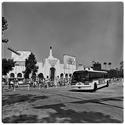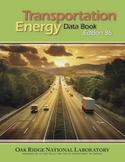The California High Speed Rail Authority has released its 2018 Business Plan. It portends to finally reveal the true cost for construction of Phase I of the project. The new cost estimate is at a base of $77.3 billion to a possible $98.1 billion dollars. Completion of Phase I is now projected for year 2032. Please remember the old promise to the voters was the project would be running by 2020 and the cost to California voters would be $10 billion (the rest of the $32 billions needed to build Phase I would come from Federal and private sources). read more »
Transportation
The High Speed Rail 2018 Business Plan – A Classic Model Of Deception
- Login to post comments
What Can We Do to Reduce the Spike in Pedestrian Deaths?
The recent pedestrian death by a self-driving Uber car brought renewed attention to a major problem in this nation, pedestrian deaths, which have risen from 4,000 to 6,000 annually in just 2 years!
An increasing number of people are walking and biking, resulting from a renewed awareness in the health benefits of a stroll over a drive. Today’s driver is distracted not only by their smart phone but a multitude of screens with cumbersome touch controls distracting the driver. read more »
- Login to post comments
Why We Should Fix It First with Infrastructure
My latest column is now online in the March issue of Governing. It’s called “A Tip for Infrastructure Builders: Fix It First.” Here’s an excerpt: read more »
- Login to post comments
Connecting the Dots by Transit in Los Angeles?
Over the past three years, the nation’s largest transit systems have endured a broad and unprecedented ridership decline. By far the largest drop has been in Los Angeles and this has resulted in justifiable consternation. read more »
- Login to post comments
Autonomous Cars Are About To Transform The Suburbs
Suburbs have largely been dismissed by environmentalists and urban planners as bad for the planet, a form that needed to be eliminated to make way for a bright urban future. Yet, after a few years of demographic stultification amid the Great Recession, Americans are again heading to the suburbs in large numbers, particularly millennials. read more »
- Login to post comments
Olympics Transportation: The L. A. Times Needn’t Worry
The Trump Infrastructure plan has finally been released. The critics are out in force, especially those with particular interest in rapid transit. The plan would reduce funding to the federal “new starts” program, which provides funding for new urban rail and busway systems. The Los Angeles Times editorial board expressed angst at this proposal. According to The Times, the "…public transit building boom in L.A. read more »
- Login to post comments
2017: Transit’s Disastrous Year
Nationwide transit ridership in December 2017 was nearly 5 percent less than December 2016. Ridership for the calendar year was 2.6 percent less than in 2016 and 6.7 percent less than 2014, transit’s recent peak. These numbers are based on the latest National Transit Database spreadsheet posted by the Federal Transit Administration. read more »
- Login to post comments
Rising Car Access Sends LA’s Transit Ridership Falling
Transit ridership is down in a number of markets, but LA’s declines have attracted a lot of attention – and for good reason. LA has invested billions of dollars in rail transit but has failed to grow ridership, which is still below its 1985 levels. And ridership has actually been falling in recent years, even on the existing core rail lines. (New and expanded lines saw some growth). read more »
- Login to post comments
Trump’s Infrastructure Plan Is A Rare, And Potentially Bipartisan, Feel Good Moment
President Trump’s proposed trillion dollar plus infrastructure program represents a rare, and potentially united feel good moment. Yet before we jump into a massive re-do of our transportation, water and electrical systems, it’s critical to make sure we get some decent bang for the federal buck. read more »
- Login to post comments
Transportation Energy Costs
The average car on the road consumed 4,700 British thermal units (BTUs) per vehicle mile in 2015, which is almost a 50 percent reduction from 1973, when Americans drove some of the gas-guzzliest ca read more »
- Login to post comments





















